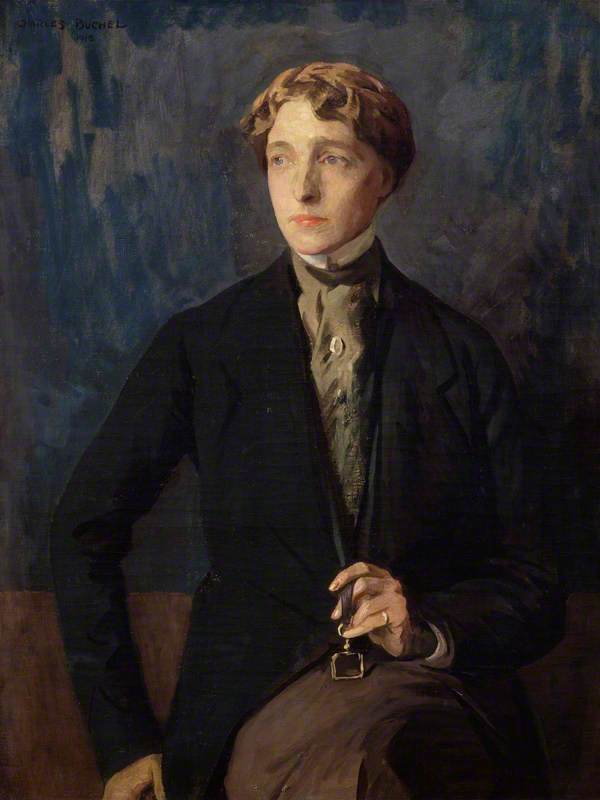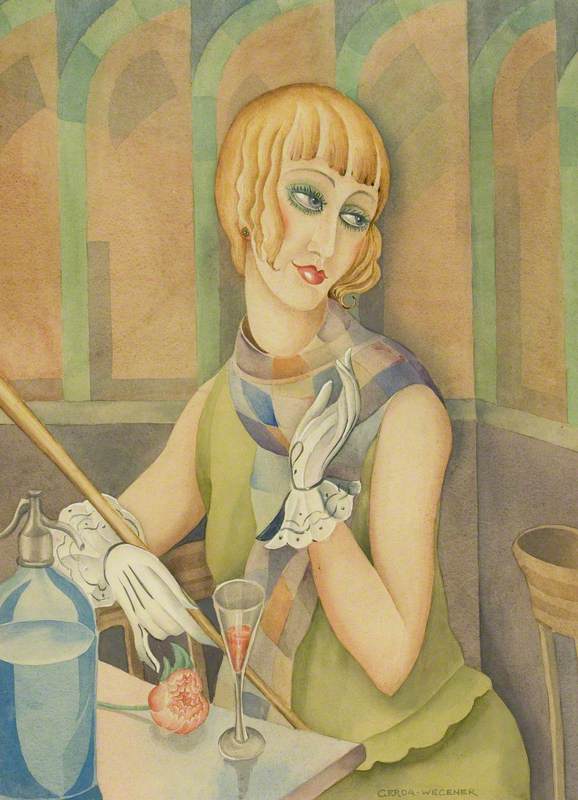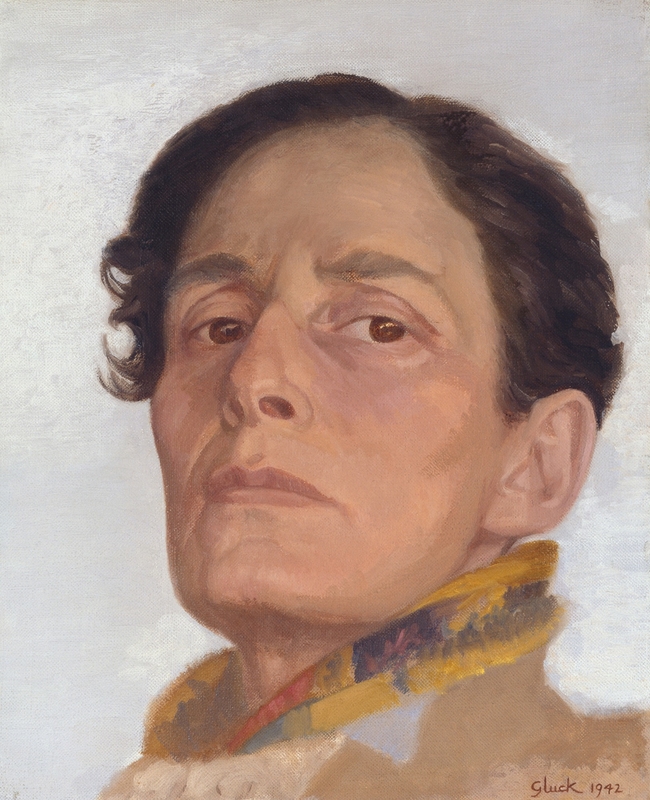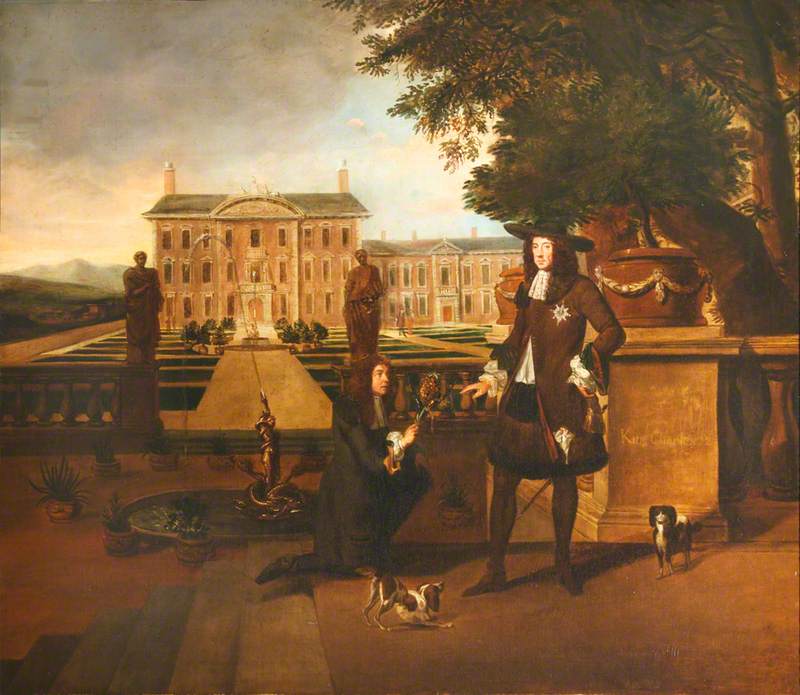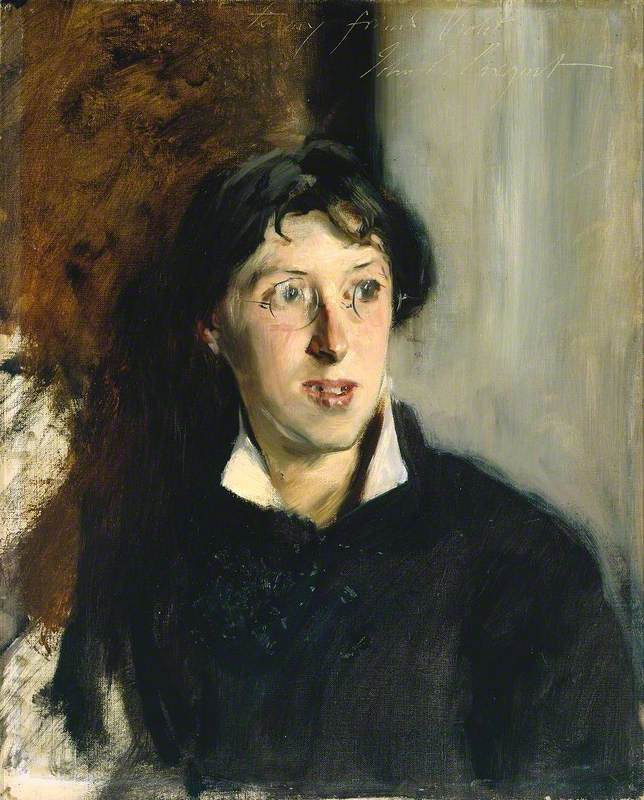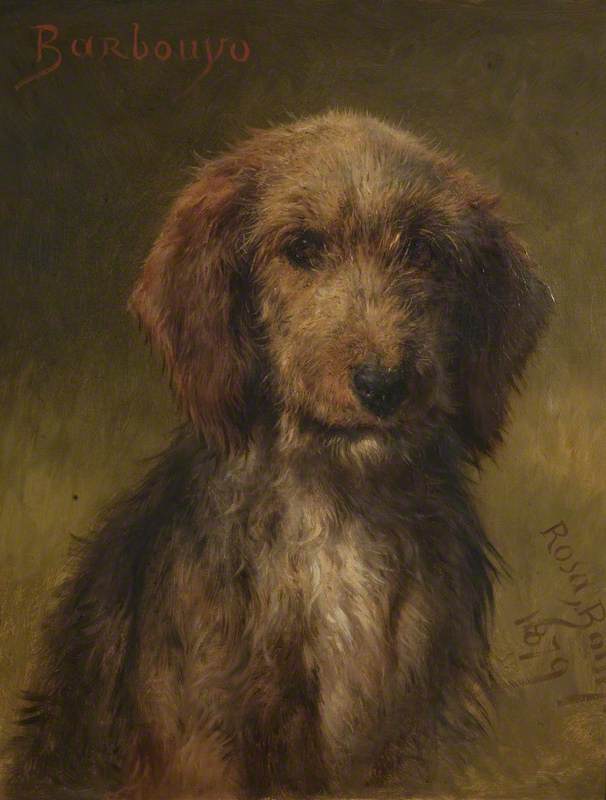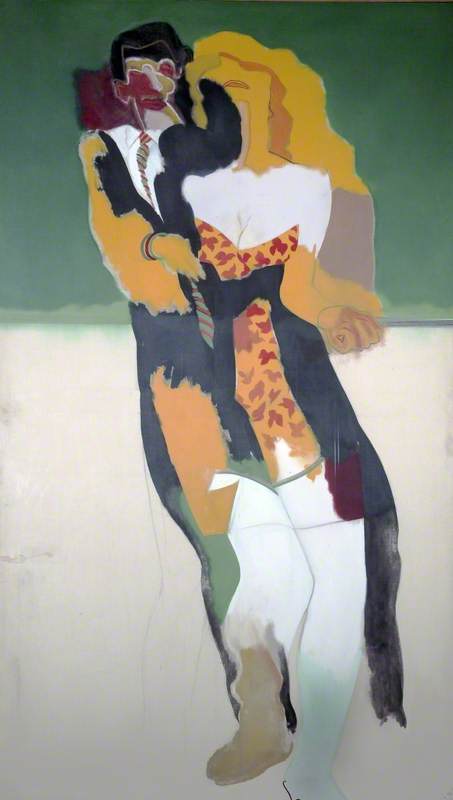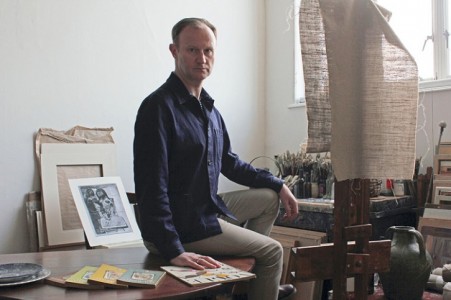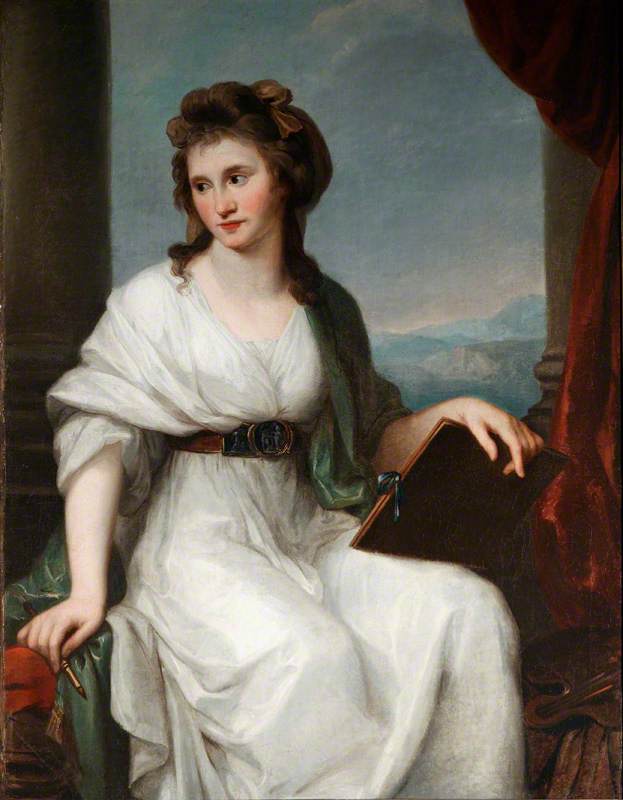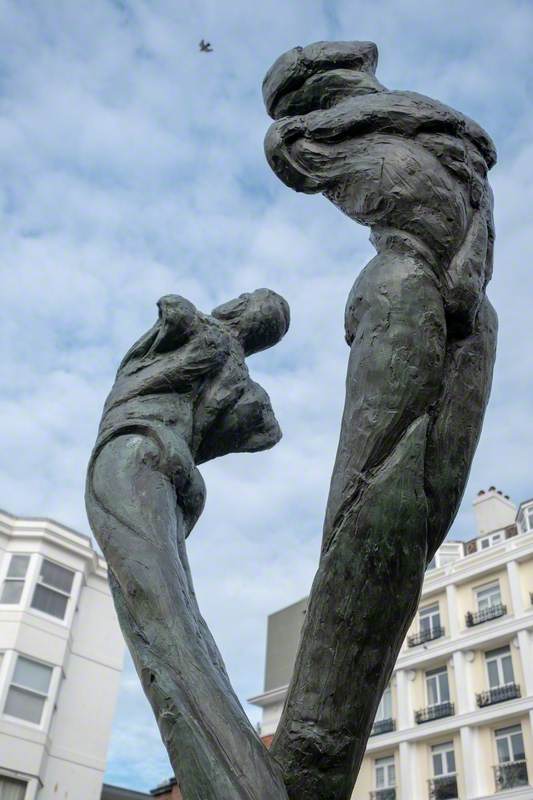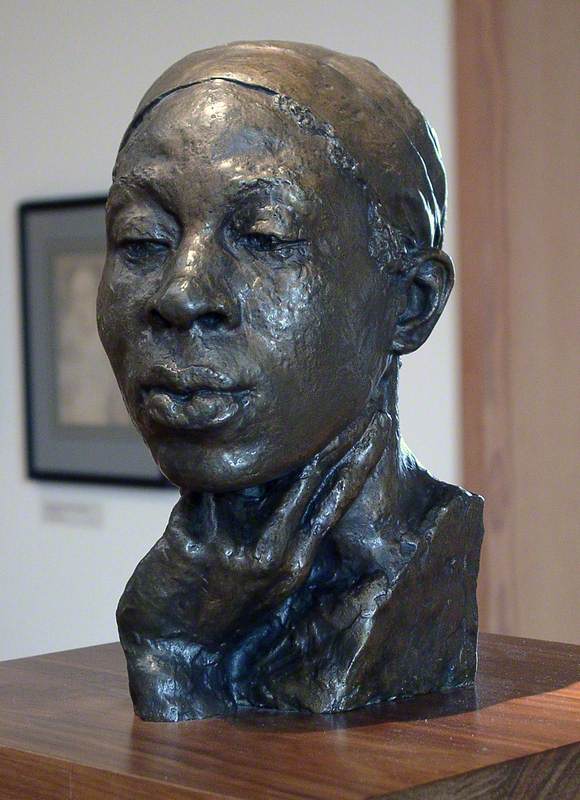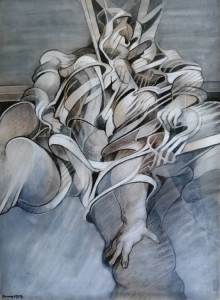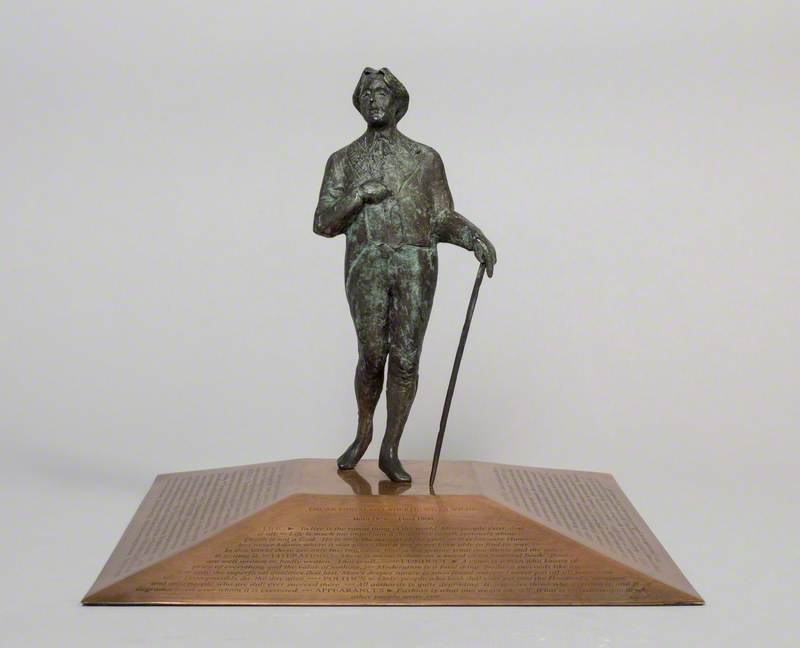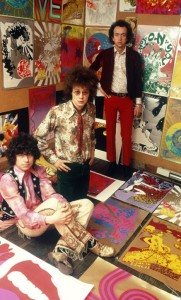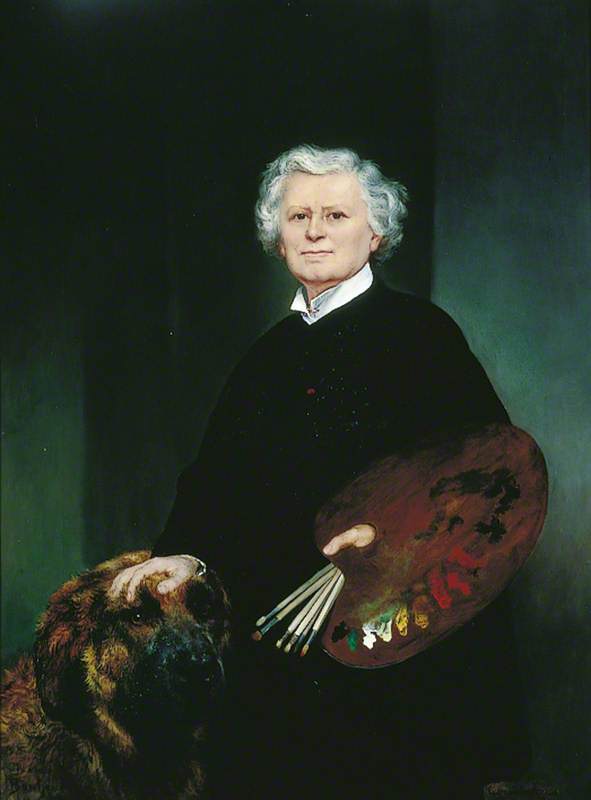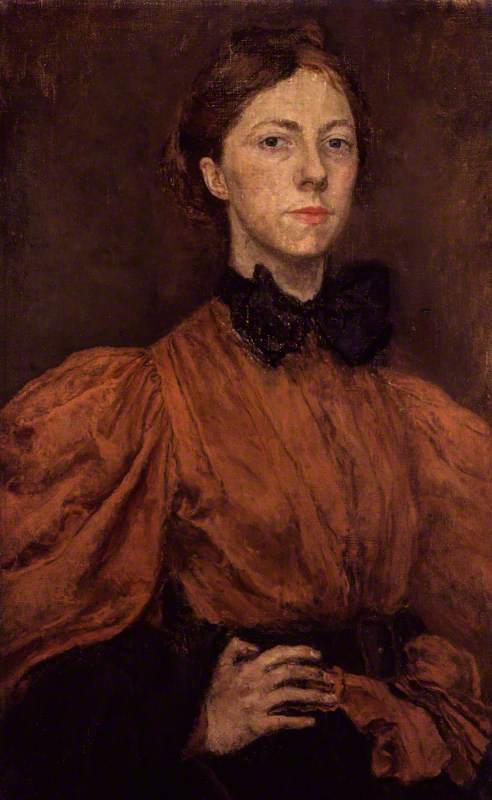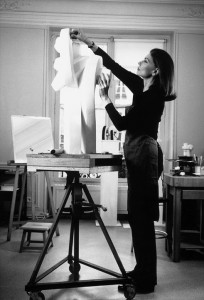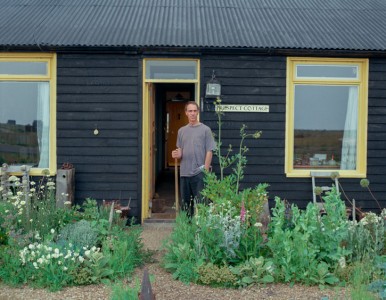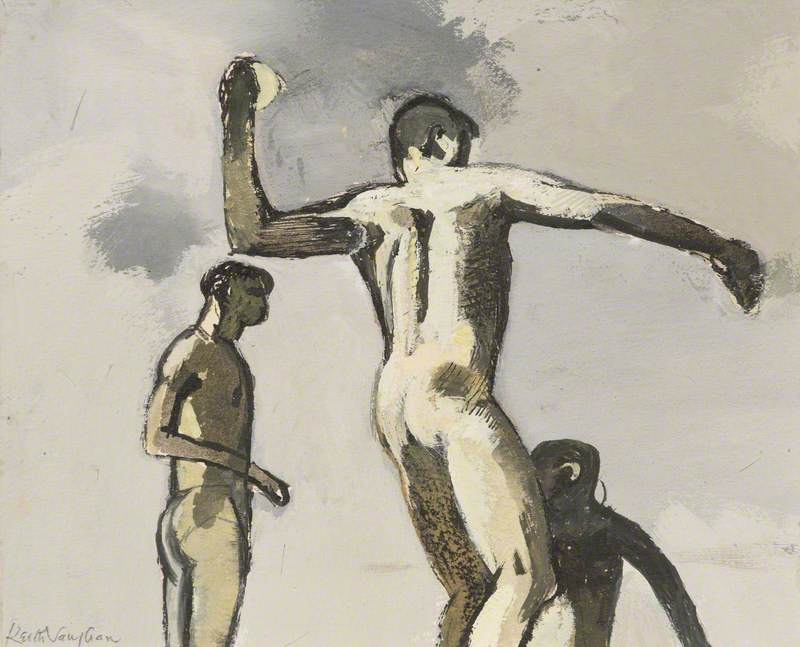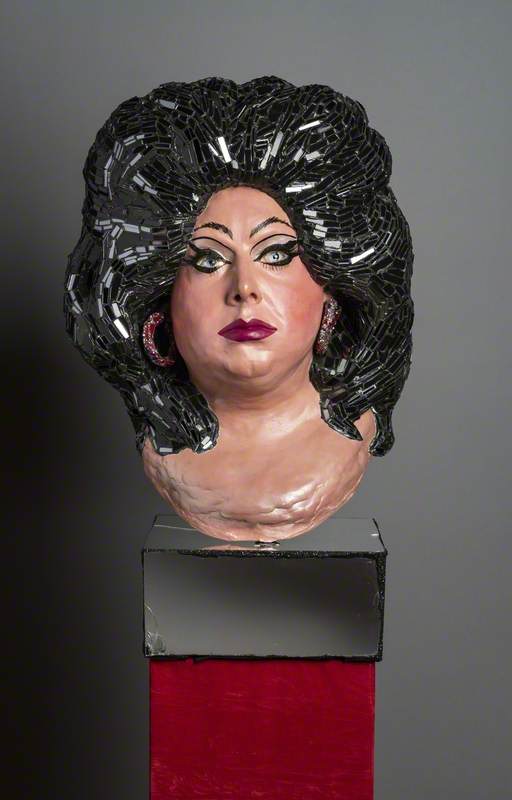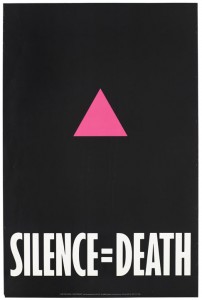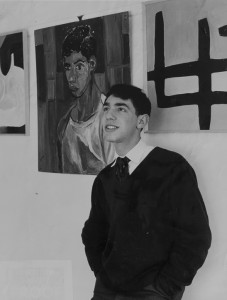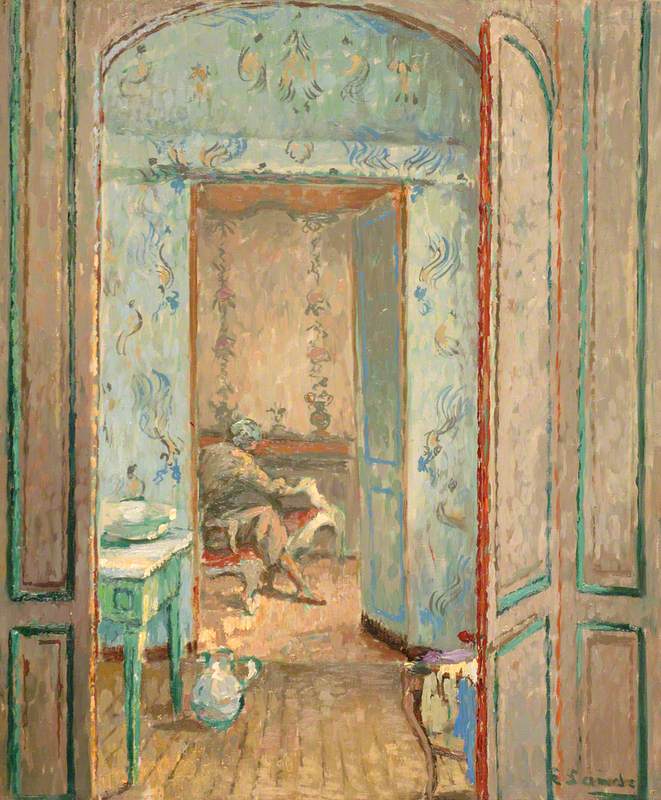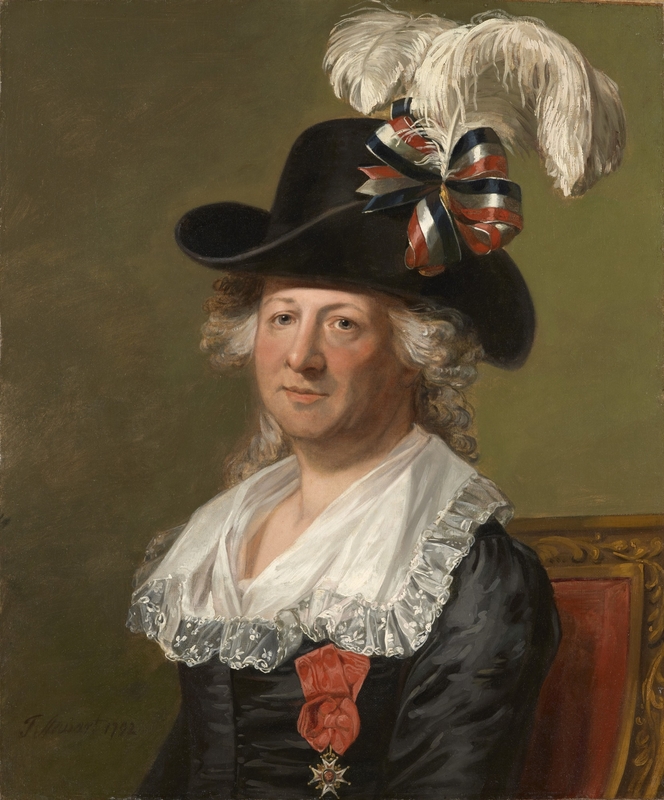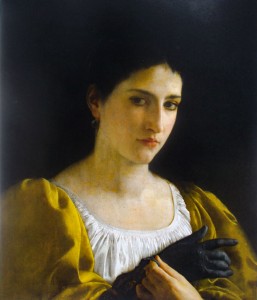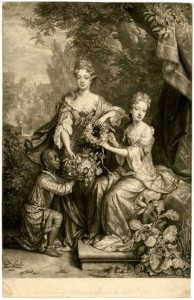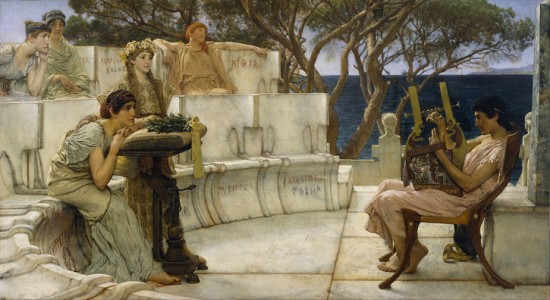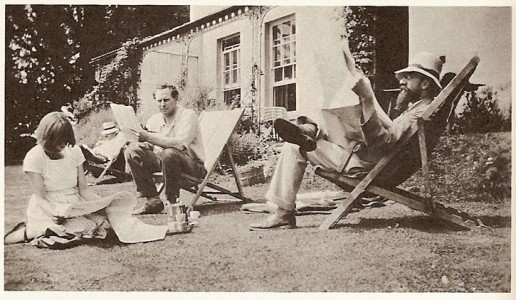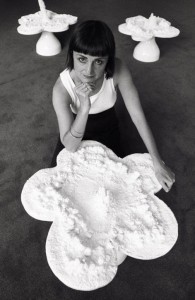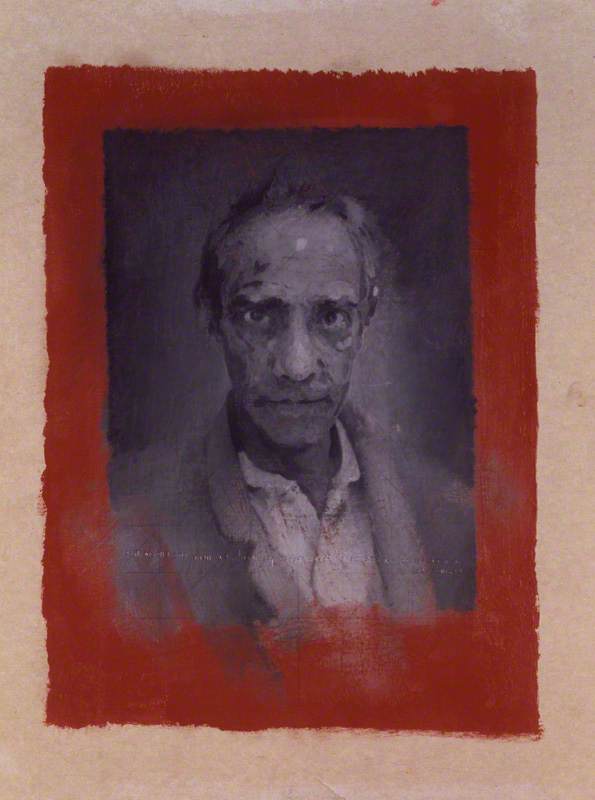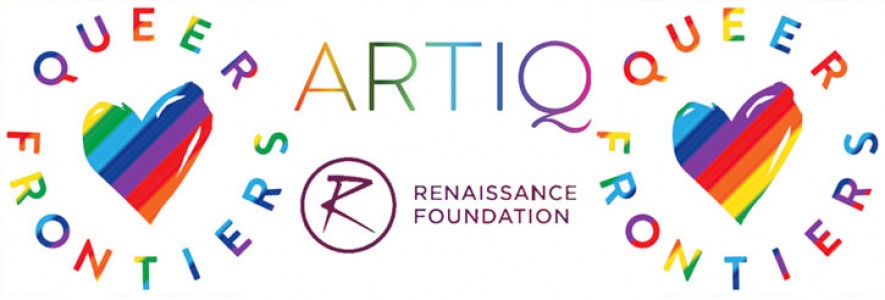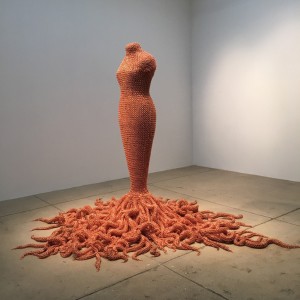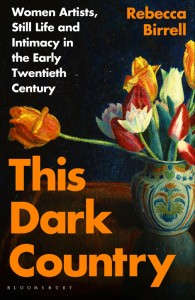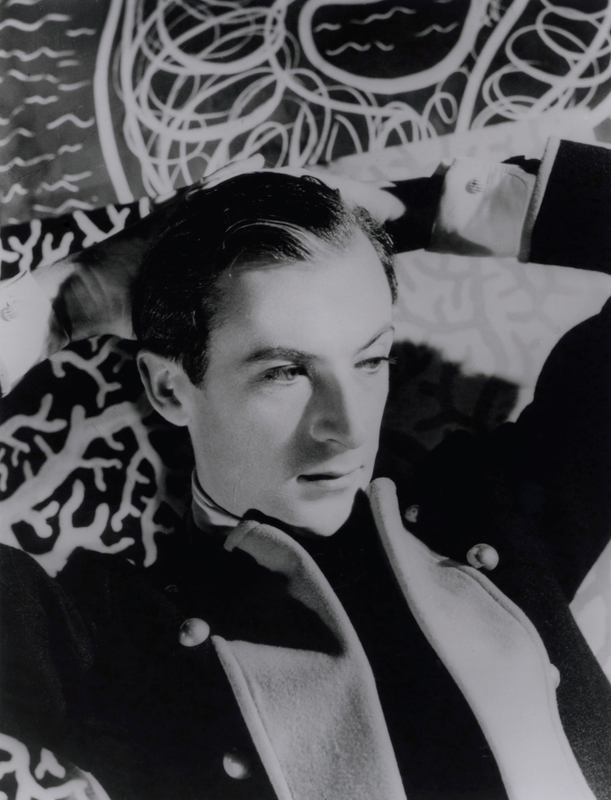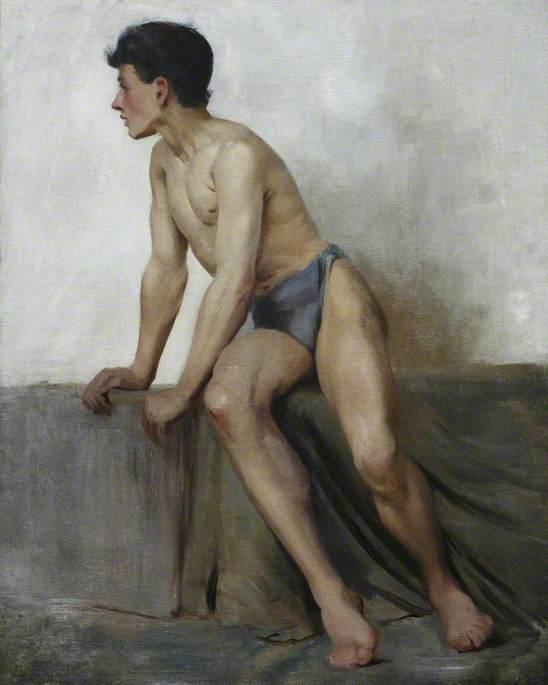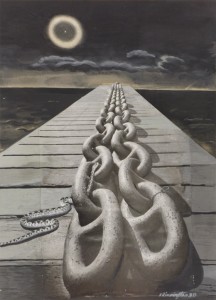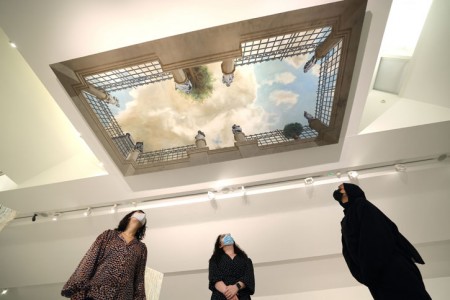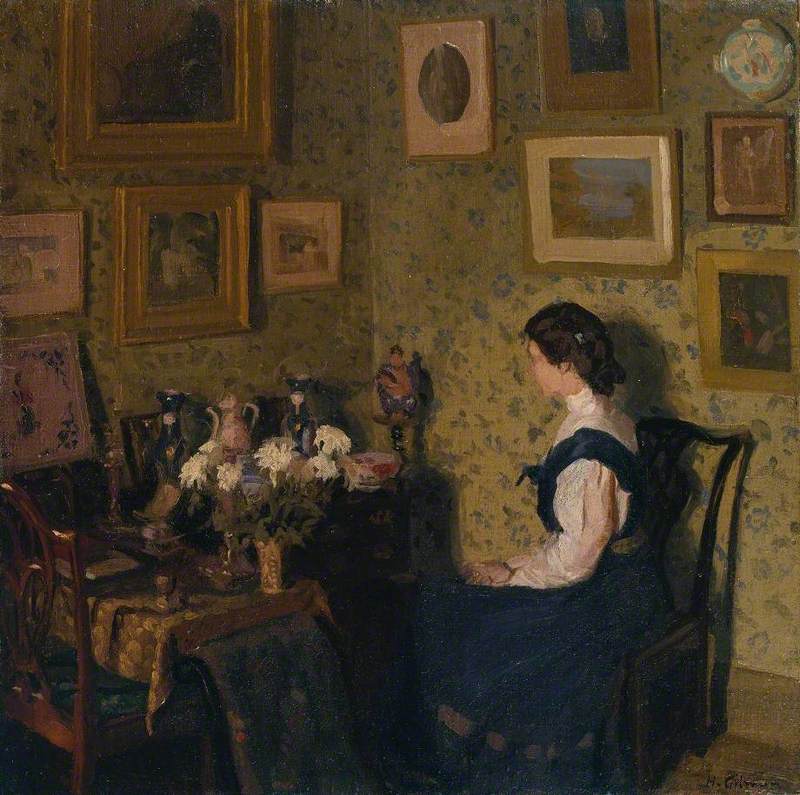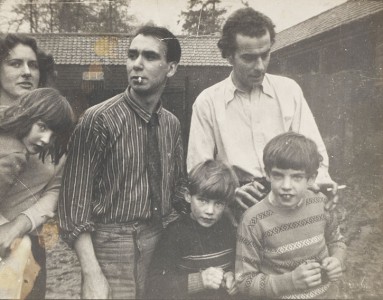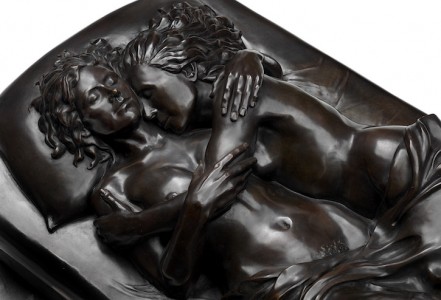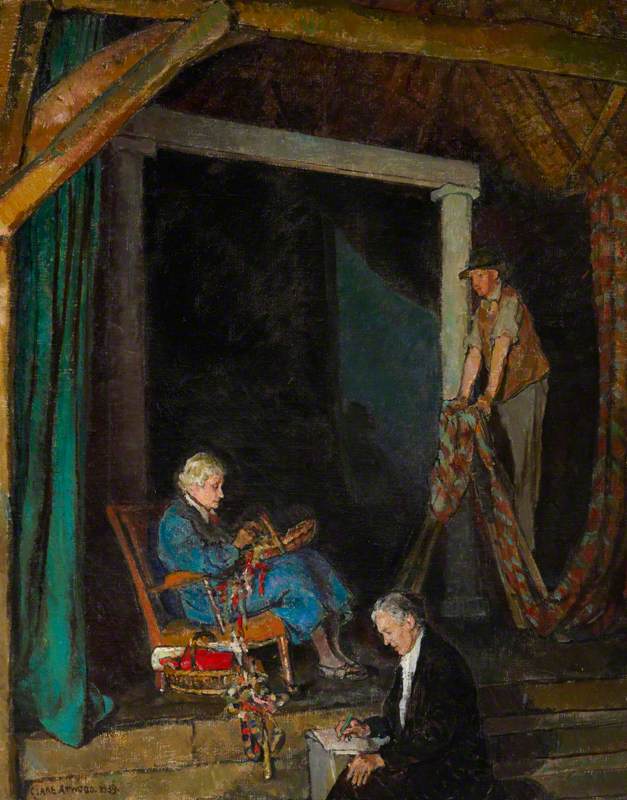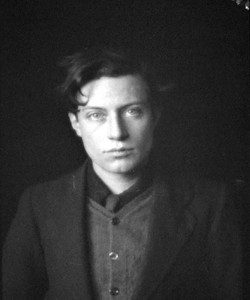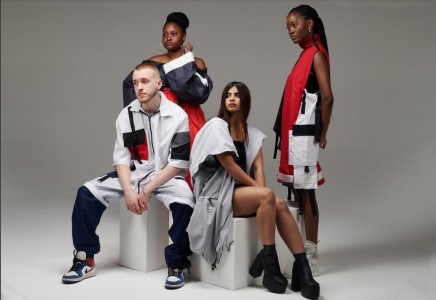Labels, like clothes, feel most comfortable when we choose them ourselves. Experimenting with notions of masculinity, femininity and androgyny, fashion through a queer lens can become a powerful way to question how we represent ourselves, outside so-called norms around gender and sexuality.
This queer, fashionable lens could be that of a monocle, worn by Radclyffe Hall in her portrait by Charles Buchel in 1918. It would have been used as a sign of recognition amongst upper-class lesbian and bi women, reaching its peak during the interwar period. By then, masculine wear would make its way into women’s fashion as they claimed their own place alongside men in active modern life. A pioneering feminist statement, the monocle would also have been a collective queer nod to the artistic lesbian women’s circles Hall navigated with her partner Lady Una Troubridge.
Hall’s aesthetics, both in fiction and in fashion, went on to inspire future queer fashion generations: her novel The Well of Loneliness portrayed its lesbian heroine Stephen’s yearning to belong through the masculine clothing she feels most comfortable in. Popular in the US, the novel inspired future expressions of butch identity for lesbian and bi women reclaiming traditionally masculine clothing and coding, to the extent to which '
Yet whilst publicly identifying as a lesbian, as far as we know, Hall also took on her father’s first name, and was nicknamed 'John' throughout her life – showing the frequent ambiguity and fluidity between gender expression, identity and queerness, especially when it comes to exploring historical people identifying on the LGBTQIA+ spectrum.
Gerda Wegener’s queered approach to fashion was very different but no less radical. As an illustrator for Vogue and La Vie Parisienne, fashion was a central part of her life, through her depictions of elegantly feminine women. However, her lesbian erotica illustrations, as well as her paintings of idealised women couples, reimagines women in control of their own desires, subverting feminine codes away from the male gaze.
This 'femme' identity, which would have been reclaimed by lesbian and bi women alongside more butch expressions, takes on an even more powerful meaning through Gerda’s depictions of her spouse Lili Elbe. Wegener’s work also embraced fashion as a form of gender performance. Yet Lili coming to terms with her true gender identity as a woman by modelling for her wife allowed costume to change from a disguise to a means of making her womanhood visible, re-fashioning herself in new ways at a time where trans identity was rarely openly expressed.
Gerda depicted Lili and herself as multiple femme versions of themselves through dress, for example as an aristocratic couple in romantic frills in On the Way to Anacapri (1922). In this portrait, Lili channels an elegant, fashionable attitude which seems lifted off the pages of Gerda’s Vogue illustrations. Their existence as a lesbian couple lives on in portraits reclaiming femme aesthetics as a weapon to subvert the status quo through lipstick, frills and heels.
Gender expression can be experimental and playful as much as powerfully uncompromising.
Gluck applied androgyny – with its challenging of gender boundaries and binaries – to their entire life, self-fashioning through art and clothing. They express a carefully controlled appearance in a rigid artist’s blouse, in a 1932 photographic portrait by Howard Coster – who described himself as a 'photographer of men'. Yet just like their chosen name with 'no suffix, prefix or quote', their identity and appearance transcends notions of masculinity or femininity.
Uncompromising, they resigned from an art society’s vice-president position when they were addressed there as 'Miss Gluck' – which was both a personal and feminist declaration to be known for their art rather than their class or gender. Their
For queer women and non-binary artists fashioning their own sense of style often reflected their art: subversive, unapologetic and uncompromising in breaking down the assumptions and erasure they faced.
Claire Mead, art and design curator
